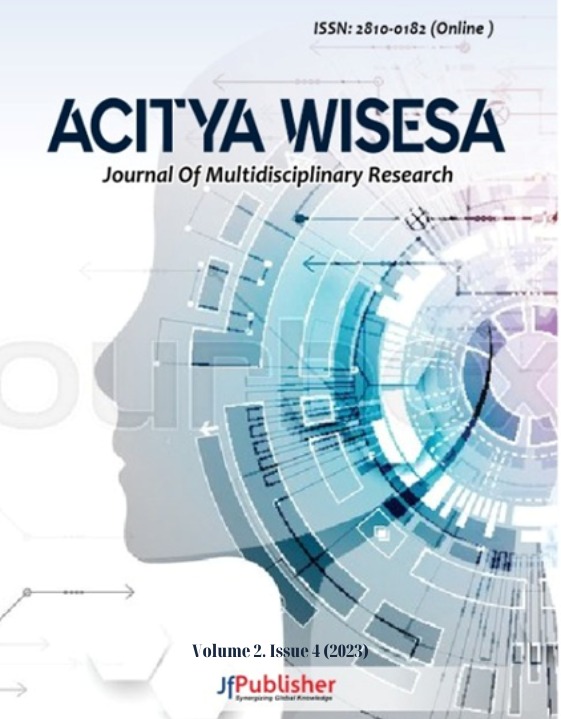A COMPARATIVE ANALYSIS OF GENDERED LANGUAGE FEATURES: THE MALE AND FEMALE PROTAGONISTS IN FRUITS BASKET
DOI:
https://doi.org/10.56943/jmr.v4i2.860This study presents a comparative analysis of gendered language features as exhibited by the male and female protagonists in the anime series Fruits Basket (Season 1). Grounded in Deborah Tannen’s (1990) sociolinguistic framework, which posits that male and female communication styles often reflect contrasting cultures, a “report talk” prioritizing status and independence versus a "rapport talk" emphasizing connection and intimacy. This research examines the dialogue of Souma Kyo and Honda Tohru. Employing a qualitative descriptive methodology, the study conducted a close textual analysis of the series' transcripts to identify and categorize distinctive linguistic patterns. The findings indicate a pronounced divergence in their communicative strategies. Kyo’s language is characterized by directness, imperative commands, and confrontational rhetoric, aligning with Tannen’s concept of a report talk oriented towards asserting dominance and achieving conversational goals. Conversely, Tohru consistently employs linguistic features designed to build rapport, including frequent use of polite forms, mitigating devices, and empathetic expressions, demonstrating a primary concern for her interlocutor's emotional state and the maintenance of harmonious relationships. These results not only corroborate Tannen’s theoretical distinctions within a popular media text but also illustrate how fictional narratives can mirror and reinforce broader sociolinguistic patterns. It is recommended that future research explores these dynamics across different cultural contexts and narrative genres to further validate these observations.
Keywords: Anime Communication Style Comparative Analysis Discourse Analysis Gendered Language
Bekkouche, Z., & Touidjine, A. (2022). Gender–Related Language Differences in Assia Djebar‟s Fantasia and Yasmina Khadra‟s What the Day Owes the Night. UNIVERSITY OF IBN KHALDOUN.
Bogdan, R., & Biklen, S. K. (2007). Qualitative Research for Education: An Introduction to Theories and Methods. Pearson A & B. https://books.google.co.id/books/about/Qualitative_Research_for_Education.html?hl=id&id=HSMiAQAAIAAJ&redir_esc=y
Creswell, J. W., & Creswell, J. D. (2023). Research design: Qualitative, quantitative, and mixed methods approaches (Sixth). SAGE Publication, Inc.
Crossman, A. (2024). Sociolinguistics: The Connection of Language and Society. ThoughtCo. https://www.thoughtco.com/sociolinguistics-3026278
Ehrlich, S., Meyerhoff, M., & Holmes, J. (2017). The handbook of language, gender, and sexuality. Wiley Blackwell. https://books.google.com/books/about/The_Handbook_of_Language_Gender_and_Sexu.html?hl=id&id=m_YtDwAAQBAJ
Gultom, E., & Sartika, D. (2023). Women’s Patterns of Talk in The Third Wife Movie Script (Application in Family Environment). ENJEL: English Journal of Education and Literature, 2(01), 97–104. https://doi.org/10.30599/enjel.v2i01.469
Holmes, J., & Wilson, N. (2017). An Introduction to Sociolinguistics (Fifth Edition). Routledge. https://books.google.co.id/books?id=SC8lDwAAQBAJ&printsec=frontcover&hl=id#v=onepage&q&f=false
Juniana, C. A. A. (2011). An Investigation of Deborah Tannen’s Theory of Male and Female Language on Facebook. Lingua Scientia, 18(2). https://doi.org/10.23887/ls.v18i2.16045
Martinez, V. R., Somandepalli, K., & Narayanan, S. (2022). Boys don’t cry (or kiss or dance): A computational linguistic lens into gendered actions in film. PLOS ONE, 17(12), e0278604. https://doi.org/10.1371/journal.pone.0278604
Olusoji, A. D. (2023). INFLUENCE OF DIVERSITY ON EMPLOYEE SATISFACTION: A STUDY OF TERTIARY INSTITUTIONS IN THE NIGER DELTA REGION OF NIGERIA. Journal of Multidisciplinary Research, 47–58. https://doi.org/10.56943/jmr.v2i1.253
Salhi, Z. S. (2008). Between the languages of silence and the woman’s word: gender and language in the work of Assia Djebar. Int’l. J. Soc. Lang, 79–101. https://www.researchgate.net/profile/Zahia-Smail-Salhi-2/publication/240751097_Between_the_languages_of_silence_and_the_woman’s_word_Gender_and_language_in_the_work_of_Assia_Djebar/links/566c5c9608aea0892c4fbfdd/Between-the-languages-of-silence-and-the-womans-word-Gender-and-language-in-the-work-of-Assia-Djebar.pdf
Sargsyan, M. (2022). Gender Features Of Male And Female Speech In Armenian Language. “Katchar” Collection of Scientific Articles International Scientific-Educational Center NAS RA, 63–78. https://doi.org/10.54503/2579-2903-2022.2-63
Shaibu, M., Clifford, O. C., Abdulahi, S. A., & Dikko, A. M. (2023). COMPARATIVE STUDY ON NUTRITIONAL AND ANTI NUTRITIONAL COMPOSITION OF FRESH AND DRIED OKRA OBTAINED FROM GUSAU MARKET NIGERIA. Journal of Multidisciplinary Research, 1–11. https://doi.org/10.56943/jmr.v2i1.230
Tannen, D. (2007). You just don’t understand : women and men in conversation. William Morrow.
Taylor, S. J., Bogdan, R., & DeVault, M. L. (2016). Introduction to Qualitative Research Methods. In John Wiley & Sons, Inc. (Issue December). John Wiley & Sons.
Weinberg, F. J., Treviño, L. J., & Cleveland, A. O. (2019). Gendered Communication and Career Outcomes: A Construct Validation and Prediction of Hierarchical Advancement and Non-Hierarchical Rewards. Communication Research, 46(4), 456–502. https://doi.org/10.1177/0093650215590605

